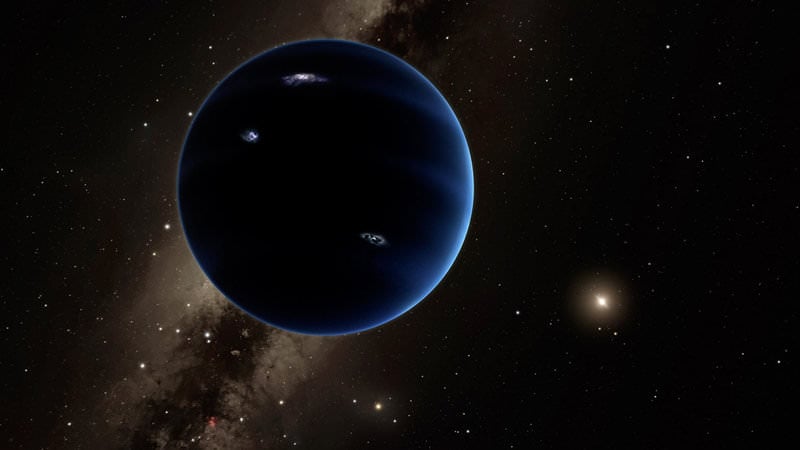In
January of 2016
, astronomers Mike Brown and Konstantin Batygin published the first evidence that there might be another planet in our Solar System. Known as "
Planet 9
" ("Planet X" to those who reject the controversial
2006 Resolution by the IAU
), this hypothetical body was believed to orbit at an extreme distance from our Sun, as evidenced by the fact that certain Trans-Neptunian Objects (TNOs) all seem to be pointing in the same direction.
Since that time, more and more evidence has been produced that show how the presence of Planet 9 affected the evolution of the Solar System, leading it to become as it is today. For example, a
recent study
by a team of researchers from the University of Michigan has shown how Planet 9 may have kept certain TNOs from being destroyed or ejected from the Solar System over the course of billions of years.
The study, which was recently published in the Astronomical Journal under the title "
Evaluating the Dynamical Stability of Outer Solar System Objects in the Presence of Planet Nine
", was led by Juliette Becker, a graduate student with the University of Michigan's Department of Astronomy. It was supported by Professors David Gerdes and Fred Adams, as well as graduate and undergraduate students from UofM's Depart of Physics.
[caption id="attachment_126971" align="aligncenter" width="580"]
Diagram showing how the six most distant known objects in the Solar System with orbits beyond Neptune (TNOs) all mysteriously line up in a single direction. Credit: Caltech/R. Hurt (IPAC)
[/caption]
For the sake of their study, Becker and her colleagues conducted a large set of computer simulations that examined the stability of Trans-Neptunian Objects (TNOs) who's orbits are believed to have been influenced by Planet 9. In each simulation, the researchers tested a different version of Planet 9 to see if its gravitational influence would result in the Solar System as we know it today.
From this, they uncovered two key findings. First, the simulations showed that Planet 9 may have led to the current Solar System by preventing these TNOs from being destroyed or ejected from the Solar System. Second, the simulations indicated that TNOs can jump between stable orbits, a process they refer to as "resonance hopping". This would prevent these same TNOs from being thrown out of the Kuiper Belt.
As Becker explained in a University of Michigan
press statement
:
Next, Becker and her team examined the TNOs to see if they experienced resonance with Planet 9. This phenomena, which occurs as a result of objects exerting a gravitational influence on each other, causes them to line up in a pattern. What they found was that, on occasion, Neptune will push a TNOs out of its orbital resonance, but does not disturb it enough to send it towards the Sun.
[caption id="attachment_127802" align="aligncenter" width="580"]
Artist's impression of Planet Nine, blocking out the Milky Way. The Sun is in the distance, with the orbit of Neptune shown as a ring. Credit: ESO/Tomruen/nagualdesign
[/caption]
A plausible explanation for this behavior was the gravitational influence of another object, which serves to catch any TNOs and confine them to a different resonance. In addition, the team also considered a newly-discovered TNO that was recently detected by
The Dark Energy Survey
collaboration - a group of 400 scientist from 26 institutions in seven countries, which includes several members from the University of Michigan.
This object has a high orbital inclination compared to the plane of the Solar System, where it is tilted at 54° relative to the Sun's ecliptic. After analyzing this new object, Becker and team concluded that the object also experiences resonance hopping, which is consistent with the existence of Planet 9. This, along with other recent studies, are creating a picture where it is harder to imagine the Solar System without Planet 9 than with it.
As Becker
explained
, all that remains now is to observe Planet 9 directly."The ultimate goal would be to directly see Planet Nine—to take a telescope, point it at the sky, and see reflected light from the sun bouncing off of Planet Nine," she said. "Since we haven't yet been able to find it, despite many people looking, we're stuck with these kinds of indirect methods."
Further Reading: University of Michigan, The Astronomical Journal
 Universe Today
Universe Today
